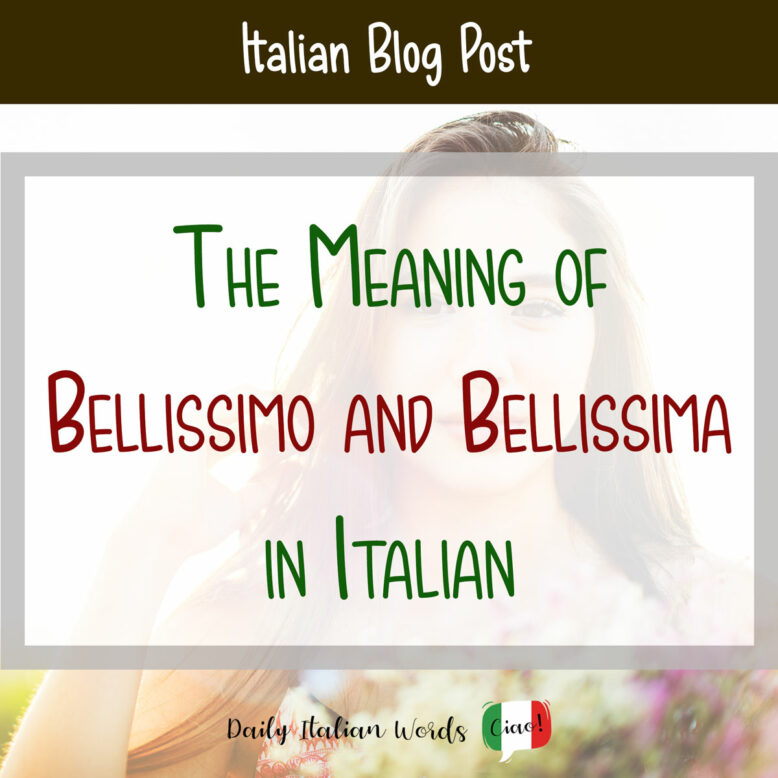Two Italian words that many people have heard before, even if they aren’t actively studying the language of love, are bellissimo and bellissima. Curious to find out what they mean? Then keep on reading!

The Meaning of Bellissimo
Bellissimo is the absolute superlative of bello, a masculine adjective that can translate in numerous ways including beautiful, handsome, nice, lovely, and fine to name a few. It is used to describe males or masculine nouns. The suffix -issimo simply intensifies the meaning of an adjective, much like the English adverb very.
Take a moment to compare the following examples:
Il ragazzo è bello.
Il ragazzo è bellissimo.
The boy is handsome.
The boy is very handsome.
Il film è bello.
Il film è bellissimo.
The film is nice.
The film is wonderful.
Il tempo è bello.
Il tempo è bellissimo.
The weather is fine.
The weather is fantastic.

The Meaning of Bellissima
As you may have already guessed, bellissima is the feminine form of bellissimo. It is the combination of the adjective bella and the absolute superlative -issima. Bellissima can describe females, or nouns that are defined as being feminine.
La ragazza è bella.
La ragazza è bellissima.
The girl is beautiful.
The girl is very beautiful.
La canzone è bella.
La canzone è bellissima.
The song is nice.
The song is very nice.

The Plural Forms
If you are talking about more than one person or thing, bellissimo / bellissima become the plural forms bellissimi / bellissime respectively.
I ragazzi sono belli.
I ragazzi sono bellissimi.
The boys are handsome.
The boys are very handsome.
Le ragazze sono belle.
Le ragazze sono bellissime.
The girls are beautiful.
The girls are very beautiful.

Molto bello vs Bellissimo
Note that in Italian, it is also possible to use the English construction: molto (the equivalent of very) + the adjective bello / bella. (e.g. Il ragazzo è molto bello. = The boy is very handsome.)
The difference between molto bello and bellissimo is so small that some might even say it’s not relevant. With that said, if we were to put these words on a scale, we think that bellissimo would sit on top: bellissimo > molto bello > bello.
Keep in mind that in most cases, the emphasis of your voice when pronouncing molto bello or bellissimo is enough to determine the level of intensity.
Another colloquial version involves repeating molto a few times for further emphasis (molto molto bello or even molto molto molto bello).
Questo film è molto, molto, molto bello! Vai a vederlo il prima possibile.
This film is very, very, very nice. Go and see it as soon as possible.
Heather Broster is a graduate with honours in linguistics from the University of Western Ontario. She is an aspiring polyglot, proficient in English and Italian, as well as Japanese, Welsh, and French to varying degrees of fluency. Originally from Toronto, Heather has resided in various countries, notably Italy for a period of six years. Her primary focus lies in the fields of language acquisition, education, and bilingual instruction.


